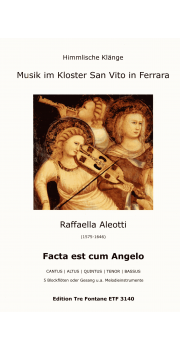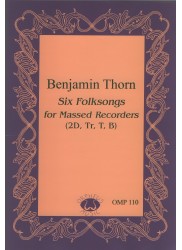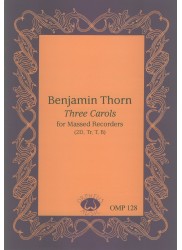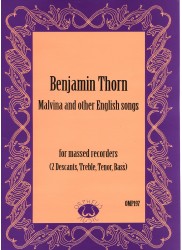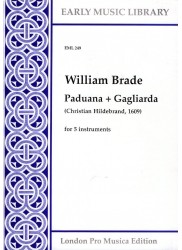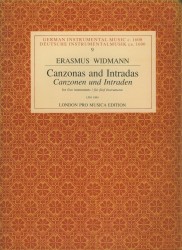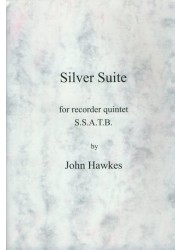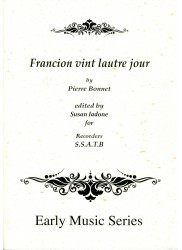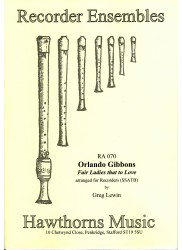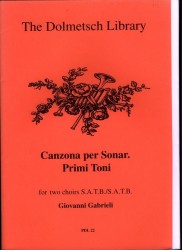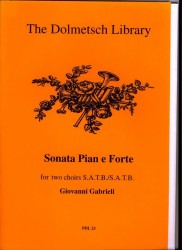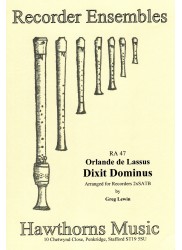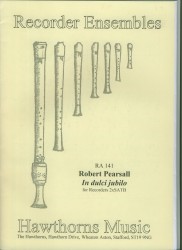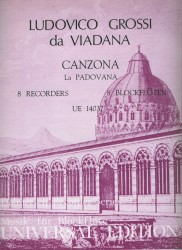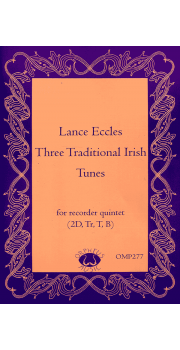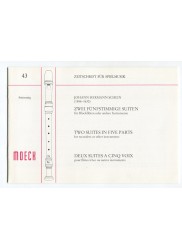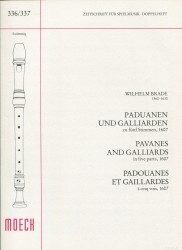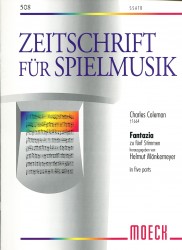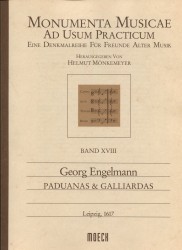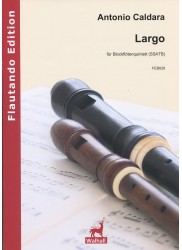No products
Prices are tax included
Music in the Monastery of San Vito in Ferrara
Composer: Aleotti - Raffaella
Arranger: Himmlische Klange
Instrumentation: SSATB
Period/Genre: Renaissance
Grade: Moderate - Difficult
More info
Raffaella Aleotti - (1575 - 1646)
The musical portrait of an unusual woman As the second of five daughters in the service of Duke Alfonso II d'Este Architect and engineer Giovanni Battista Aleotti (1546-1636) and his wife Giulia Vittoria Elisabetta was born in Ferrara in 1575 and on September 22, 1575 in the Parish Church of Santa Maria baptized in Vado/Ferrara. Her musical talent was discovered at an early age when she Listened to her older sister's harpsichord lessons and started playing the harpsichord herself to play. Johann Gottfried Walter writes: Aleotti (Vittoria) the second daughter of Gio.
Battista Aleotti from Argenta, was when their older sister initially of Alessandro Milleville, and then of Ercole Pasquini in who was informed of Music, always present in the fourth to fifth year of her age, unnoticed so much that she began within a year, so well with astonishment of the parents, as the latter informatoris himself, to play the arpicordo; became then informed about this good old man for two years with extremely good success, also on its performance in the one in Ferrara, which is particularly famous for its music Done nun monastery to S. Viti, in order to perfect oneself even better in the same. To Having reached the 14th year, she has remained in just the imaginary Closter, and has several Things composed, of which her father remembered above. 1593, under the title: Ghirlanda da Madrigali à 4 voci, 21. Pieces with Italian text, by the Guarini Poetry to be printed at Venice in 4to. Johann Gottfried Walter "Musicalisches Lexicon oder Musicalische Bibiothec" (Leipzig 1732) Vittoria gave up her civil name when she entered the monastery of San Vito took the monastery name Raffaella.
The nuns at the Convent of San Vito in Ferrara were known for their high musical standards known, not only concerning the singing and the organ, but also for the orchestra, which consisted of 23 singers and instrumentalists. Giovanni Maria Artusi (1540- 1613) describes in "L'Artusi overo delle imperffettioni della moderna musica" (1600), that the nuns of San Vito have a special wealth of instruments like Cornett (cornett), trombones, violins, viole bastards, double harps, lutes, cornamuses, flutes and a harpsichord. He praises the sound and intonation of the ensemble of the Sisters of San Vito as extraordinarily delicate and graceful, "as if that would have opened paradise itself" and described it as "the most outstanding most uniform and best proportioned in Italy".
The Bolognese patrician Ecole Bottrigari (1531-1612) also described the sound and the Intonation in San Vito as exceptionally good (graceful and highly refined) and he describes a Grand Concerto at the end of the 16th century, in which Vittoria Raffaella Aleotti as maestra di concerto, conducting her ensemble with a polished baton. This is considered the earliest evidence in literature for the use of a baton. Under the direction of their conductor Raffaella Aleotti, the ensemble of the nuns from San Vito in Ferrara had a special heyday and was far beyond the borders of Ferrara also known. After a musical life as an organist, composer and conductor, as a novice and prioress of the monastery of San Vito in Ferrara, Raffaella Aleotti died in Ferrara around 1646. She left to posterity two collections of wonderful madrigals and motets Ferrarese madrigal school.
(Antiphon to the birth of Christ, Gospel of Luke 2, verse 13,14) Translation: And immediately there was with the angel the multitude of the heavenly hosts, who praised God and said: Glory to God in the highest and peace on earth and good will to the people, alleluia. The host of angels rejoices: for salvation has appeared.
Heida Vissing Munster, January 2021
_Score 9 pp. Parts 5 x 2pp._
30 other products in the same category:
Reference: OMP110
Brand: Orpheus Music
6 Folksongs for Massed Recorder
Composer: Thorn - Benjamin Instrumentation: 2 Descants - Treble - Tenor -...
In StockReference: OMP110.pdf
Brand: Orpheus Music
6 Folksongs for Massed Recorder
PLEASE NOTE - DOWNLOADABLE PDF VERSION Composer: Thorn - Benjamin...
$26.50 -20%In StockReference: OMP128
Brand: Orpheus Music
Three Carols for Massed Recorders
Composer: Thorn - BenjaminInstrumentation: 2 Descants - Treble - Tenor -...
In StockReference: OMP128.pdf
Brand: Orpheus Music
Three Carols for Massed Recorders
PLEASE NOTE - DOWNLOADABLE PDF VERSION Composer: Thorn -...
$19.00 -20%In StockReference: OMP197
Brand: Orpheus Music
Malvina and other English songs
Composer: Thorn - BenjaminInstrumentation: 2 Descants - Treble - Tenor -...
In StockReference: OMP197.pdf
Brand: Orpheus Music
Malvina and other English songs
PLEASE NOTE - DOWNLOADABLE PDF VERSION Composer: Thorn -...
$22.00 -20%In StockReference: EML105
Brand: Early Music Library
7 Gavottes
Composer: Praetorius - MichaelInstrumentation: 2 Descants - Treble - Tenor -...
In StockReference: EML249
Brand: Early Music Library
Paduan & Gagliarda (1609)
Composer: Brade - WilliamInstrumentation: 2 Descants - Treble - Tenor -...
In StockReference: FEA137
Brand: Flautando Edition
Melismen
Composer: Dinescu - VioletaInstrumentation: 2 Descants - Treble - Tenor -...
In StockReference: LPMGM09
Brand: London Pro Musica
Canzonas and Intradas
Composer: Widmann - ErasmusInstrumentation: 2 Descants - Treble - Tenor -...
In StockReference: P369
Brand: Peacock Press
Silver Suite
Composer: Hawkes - John Instrumentation: 2 Descants - Treble - Tenor - Bass...
In StockReference: PEMS047
Brand: Peacock Press
Francion vint lautre jour
Composer: Bonnet - Pierre Arranger: Susan Iadone Instrumentation: 2...
In StockReference: RA061
Brand: Hawthorns
Dido's Lament
Composer: Purcell - Henry Arranger: Greg Lewin Instrumentation: Descant...
In StockReference: RA070
Brand: Hawthorns
Fair ladies that to love
Composer: Gibbons - OrlandoArranger: Greg LewinInstrumentation: 2 Descants -...
In StockReference: SA13
Kerry's Blues
Composer: Lewin - Alyson Instrumentation: 2 Descants - Treble - Tenor - Bass...
In StockReference: PDL22
Brand: Peacock Press
Canzona per Sonar
Composer: Gabrieli - GiovanniInstrumentation: 2 Descants - Treble - Tenor -...
In StockReference: PDL23
Brand: Peacock Press
Sonata Pian e Forte
Composer: Gabrieli - GiovanniInstrumentation: 2 Descants - Treble - Tenor -...
In StockReference: RA047
Brand: Hawthorns
Dixit Dominus
Composer: Lassus - Orlando de Arranger: Greg Lewin Instrumentation: 2...
In StockReference: RA089
Brand: Hawthorns
Canzon XII
Composer: Gabrieli - GiovanniArranger: Dennis BamforthInstrumentation: 2...
In StockReference: RA141
Brand: Hawthorns
In dulci jubilo
Composer: Pearsall - RobertArranger: Greg LewinInstrumentation: 2 Descants -...
In StockReference: UE14037
Brand: Universal
Canzona La Padovana
Composer: Viadana - Ludovico Grossi daArranger: Reginald...
In StockReference: PP073
Brand: Polyphonic Publications
Jelly Roll Blues
Composer: Morton - Jelly RollArranger: Ken Andresen & Marty...
In StockReference: OMP277
Brand: Orpheus Music
Three Traditional Irish Tunes
Arranger: Lance Eccles Instrumentation: 2 Descants - Treble - Tenor - Bass...
In StockReference: ZFS43
Brand: Moeck
Suite No 5 & Suite N0 11 from "Banchetto musicale"
Composer: Schein - Johann HermannArranger: Rudolf GutmannInstrumentation: 2...
In StockReference: OMP277.pdf
Brand: Orpheus Music
Three Traditional Irish Tunes
PLEASE NOTE - DOWNLOADABLE PDF VERSION Arranger: Lance Eccles...
$25.00 -20%In StockReference: ZFS336/337
Brand: Moeck
Pavanes and Galliards in Five Parts
Composer: Brade - William Arranger: Helmut Monkemeyer Instrumentation: 2...
In StockReference: M9018
Brand: Moeck
Paduanas & Galliards Volume 18
Composer: Engelmann - GeorgArranger: Helmut MonkemeyerInstrumentation:...
In StockReference: M9017
Brand: Moeck
Paduanas & Galliards Volume 17
Composer: Engelmann - GeorgArranger: Helmut MonkemeyerInstrumentation:...
In StockReference: FEB029
Brand: Flautando Edition
Largo
Composer: Caldara - Antonio Arranger: Hermann-Josef Wilbert...
In Stock




